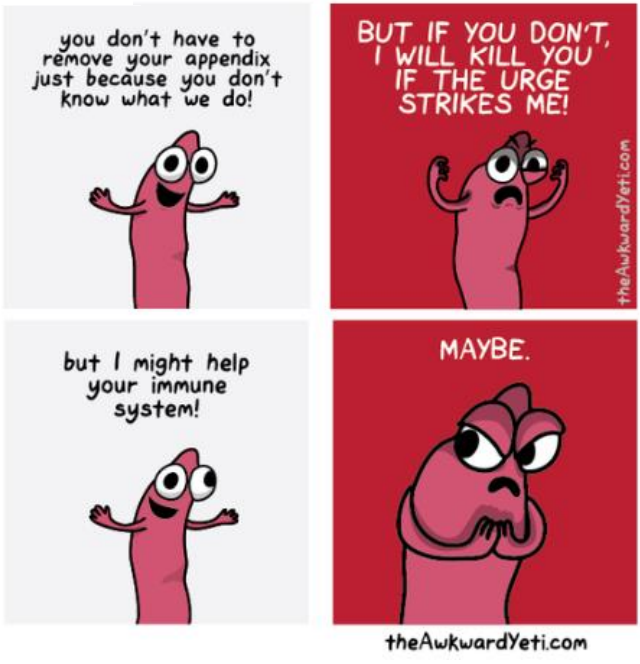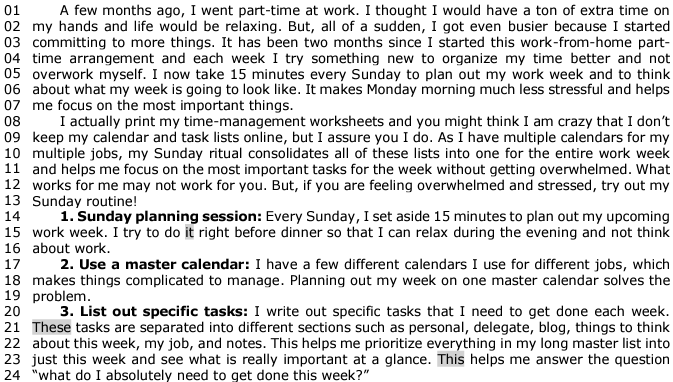Questões de Concurso
Foram encontradas 6.696 questões
Resolva questões gratuitamente!
Junte-se a mais de 4 milhões de concurseiros!
Based on text 7A1, judge the following item.
Despite the advances in technology, translation is still a
difficult task for artificial intelligence.
In the cartoon below we see an appendix, the body part, saying the following:
1. you don’t have to remove your appendix just because you don’t know what we do!
2. BUT IF YOU DON’T, I WILL KILL YOU IF THE URGE STRIKES ME!
3. but I might help your immune system! 4. MAYBE.

Analyze the following statements about the cartoon and mark T, if true, or F, if false.
( ) The second sentence contains a conditional.
( ) Sentence number 3 is a promise.
( ) “Might” in sentence 3 and “maybe” in sentence 4 both express possibilities.
The correct order of filling the parentheses, from top to bottom, is:
Fill out the gaps below with one the following words: that / where / which / who.
1. That’s the store ___ they buy their shoes.
2. The book, ___ we’ve been reading at school, was written long ago.
3. These are the directors and movies ___ I like.
4. Marie Curie is the woman ___ discovered radium.
Mark the alternative that fills out, correctly and respectively, the gaps in the sentences above.




I. The structure “it has been two months” is in the past perfect tense. II. The structure used suggests an ongoing action – the author is still working this way. III. The word “since” is connected to the point in the past in which the action started.
Which ones are correct?